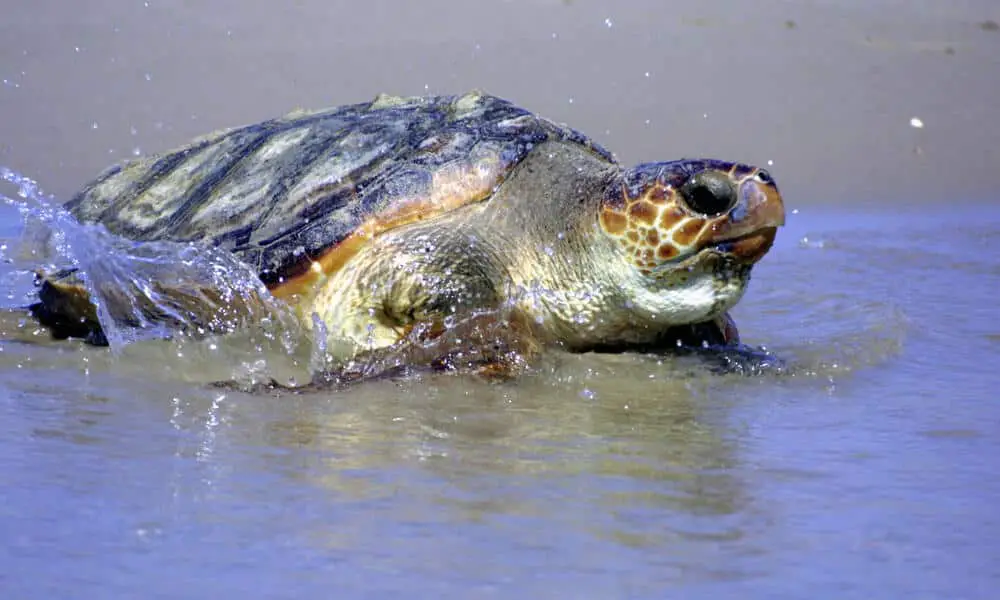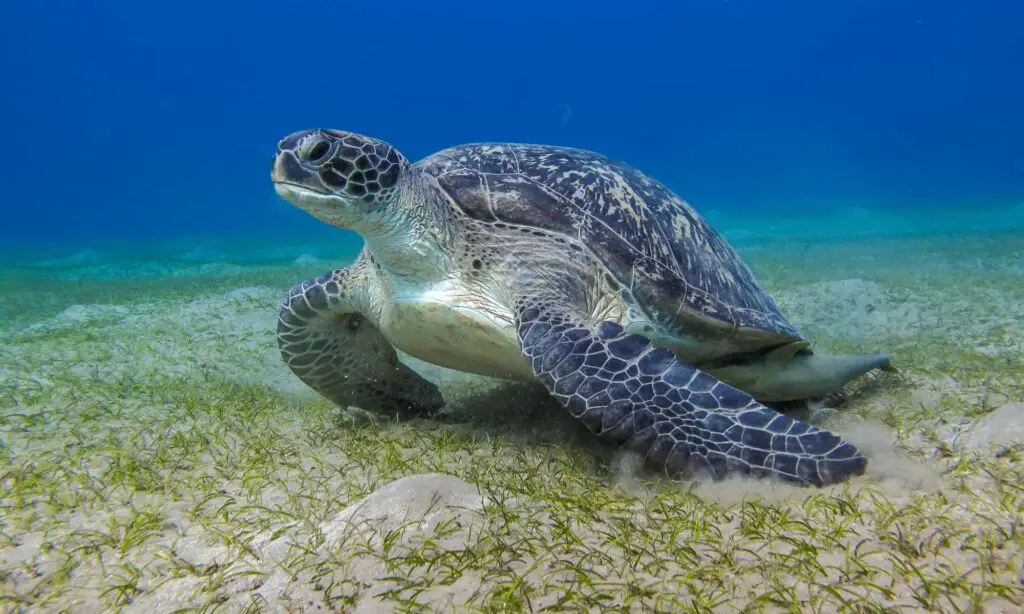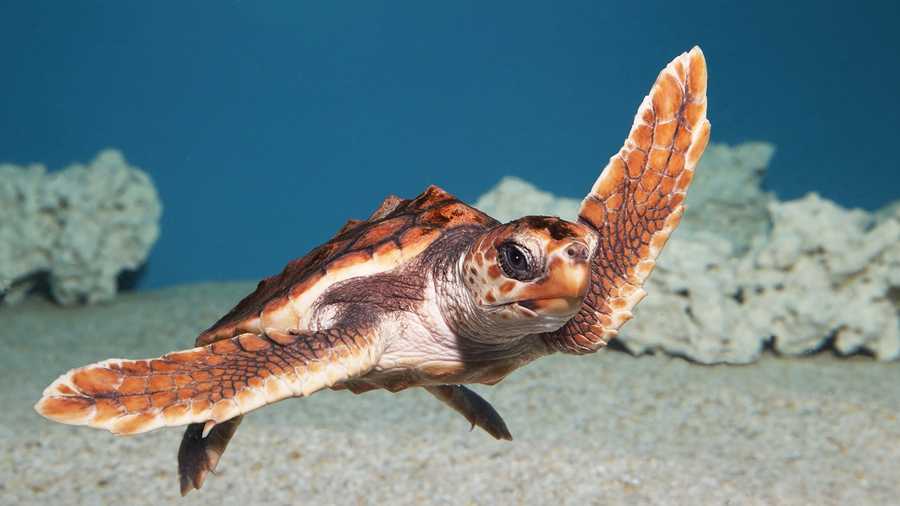Are Sea Turtles Aggressive

Introduction
Are Sea Turtles Aggressive: Sea turtles are captivating creatures that have roamed the Earth’s oceans for millions of years, their graceful movements and ancient lineage sparking intrigue and fascination among scientists and nature enthusiasts alike. While these marine reptiles are primarily known for their gentle and serene nature, the question of whether sea turtles can display aggression remains a topic of interest and inquiry.
Sea turtles belong to a diverse group of reptiles, with seven recognized species inhabiting various oceans around the world. Their unique characteristics, such as the iconic shell and powerful flippers, have evolved over eons, allowing them to adapt to life in the ocean. Despite their peaceful demeanor, sea turtles face numerous challenges, including habitat destruction, pollution, and climate change, which have led to declining populations in recent decades.
In this exploration of sea turtle behavior, we delve into the question of whether these magnificent creatures are capable of aggression. We will examine their typical behavior, interactions with other species, and potential factors that might trigger aggressive responses. By gaining a deeper understanding of sea turtle behavior, we can contribute to their conservation and better appreciate the complexities of their existence in our vast and fragile marine ecosystems.

Are sea turtles ever aggressive?
By nature, sea turtles are not aggressive animals, although males during the mating season may display signs of territoriality and dominance, using their strong bite.
Sea turtles are generally known for their peaceful and non-aggressive nature. They spend most of their lives cruising the open ocean, peacefully foraging for food and occasionally basking in the sun. Their docile demeanor has earned them the reputation of gentle giants of the sea.
However, it’s important to recognize that sea turtles, like any other living beings, can exhibit aggressive behaviors when faced with certain situations. These instances are relatively rare and are typically triggered by factors such as self-defense, territorial disputes, or competition for resources. For example, during the breeding season, male sea turtles may become territorial and engage in combat to establish dominance and secure mating opportunities.
Overall, while aggression is not a defining trait of sea turtles, they have the capacity to respond assertively when circumstances demand it. Understanding these occasional displays of aggression is crucial for conservation efforts and for ensuring the continued well-being of these magnificent creatures in their fragile marine habitats.
Are turtles aggressive to humans?
Any turtle is capable of biting a person, but some are almost never inclined to do so whereas others never miss an opportunity to latch on if they feel threatened. As with many animal traits, variability exists in how likely a turtle is to take issue with being handled by a human.
Turtles are generally not aggressive towards humans. They are known for their docile and peaceful nature, often minding their own business in their natural habitats. However, like any wild animal, they may display defensive behaviors if they feel threatened or cornered. This can include hissing, snapping, or retreating into their shells.
Some species of turtles, like snapping turtles, are more prone to defensive actions if they feel endangered. Snapping turtles, for instance, have a powerful bite and should be approached with caution. It’s important to give them their space and observe from a respectful distance.
Pet turtles, if raised in a suitable environment and handled gently from a young age, tend to be more comfortable around humans. They can become accustomed to interaction and may even recognize their owners. Still, it’s crucial to remember that even pet turtles have limits to their comfort levels and should be handled with care and consideration.
While turtles are not inherently aggressive towards humans, they can display defensive behaviors if they perceive a threat. It’s crucial to approach them with respect for their natural instincts and to exercise caution, especially with wild turtles or species known for defensive tendencies.
Do turtle bites hurt?
Do their bites hurt? Yes, however, the severity of the bite depends a lot on the size and species of the tortoise or turtle. Do they only bite when they are hungry/curious? No, they can bite if they feel threatened.
While most turtles do not have sharp teeth, they can have powerful jaws, and some species, like snapping turtles, have particularly strong bites. Snapping turtles, in particular, are known for their powerful jaw muscles and sharp beaks. If one were to bite, it could cause serious harm.
Even smaller turtles, like pet species, can deliver a painful bite, especially if they feel threatened or cornered. While their bites might not cause severe injury, they can leave bruises, scratches, or puncture wounds. Additionally, there’s a risk of infection if the bite breaks the skin, as turtles can carry bacteria in their mouths.
It’s important to approach turtles with care and respect, especially in the wild. If you encounter a turtle, it’s best to observe from a safe distance rather than attempting to handle it. If you have a pet turtle, be sure to handle it gently and with confidence to minimize any potential stress or defensive behaviors.
While turtle bites may not always cause severe injury, they can be painful and potentially lead to complications if not treated properly. It’s best to exercise caution and respect when interacting with turtles, both in the wild and as pets.
Which turtle is aggressive?
Snapping turtles (Chelydra serpentina and Macrochelys temminckii) Snapping turtles are freshwater turtles (family Chelydridae) named for their method of biting that are noted for their large size and aggressive nature.
Among turtle species, the Common Snapping Turtle (Chelydra serpentina) is often regarded as one of the more aggressive varieties. Known for their robust build and distinctive hooked beaks, snapping turtles possess powerful jaw muscles capable of delivering a formidable bite. When provoked or cornered, they may react defensively by snapping at perceived threats. This behavior is a means of self-defense, and not a sign of inherent malice.
Another species known for its relatively assertive demeanor is the Alligator Snapping Turtle (Macrochelys temminckii). This impressive creature, native to the southeastern United States, can reach considerable sizes and has a prehistoric appearance. Its large head and powerful jaws are equipped for capturing prey in its aquatic habitat. While not intentionally aggressive towards humans, the Alligator Snapping Turtle should be approached with caution due to its formidable bite.
It’s crucial to remember that while these species are labeled as “aggressive,” their behavior is primarily a response to perceived threats. In their natural habitats, these turtles play important roles in their ecosystems, and interactions with them should be approached with respect and caution.
What is a sea turtles worst enemy?
Adult sea turtles have a few predators, mostly large sharks. Tiger sharks, in particular, are known for eating sea turtles. Killer whales have been known to prey on leatherback turtles. Fishes, dogs, seabirds, raccoons, ghost crabs, and other predators prey on eggs and hatchlings.
The sea turtle faces a multitude of threats in its natural environment, but perhaps its most formidable adversary is human activity. Pollution, particularly plastic waste and marine debris, poses a significant danger to these ancient creatures. Many turtles mistakenly ingest plastic, which can lead to blockages in their digestive systems or cause other internal injuries.
Additionally, coastal development and habitat destruction disrupt nesting sites for sea turtles. Bright lights along coastlines can disorient hatchlings, leading them away from the safety of the ocean and towards danger. Climate change and rising sea levels also jeopardize nesting beaches.
Illegal poaching and the collection of eggs for trade, traditional medicine, or consumption are serious issues, especially in certain parts of the world. Moreover, incidental capture in fishing gear, known as bycatch, is a major threat to sea turtles. This often results in injury or death for the turtles.
Predators, such as sharks, birds, and even some species of fish, pose a natural threat to sea turtles, particularly when they are young or during vulnerable stages of their life cycle.
Overall, while sea turtles have evolved to navigate various challenges in their environment, it is human activity that currently poses the most severe and pressing threat to their survival. Conservation efforts are crucial in safeguarding these remarkable creatures for future generations.
Are there any specific situations where sea turtles may behave defensively?
Sea turtles, typically known for their gentle nature, may exhibit defensive behaviors in specific situations where they feel threatened or cornered. One notable instance is during the nesting process. Female sea turtles come ashore to lay their eggs, a vulnerable time for them. If they sense a potential threat, they may become more cautious and, if approached too closely, might retreat back into the sea without completing their nesting.
Similarly, hatchlings emerging from their nests face numerous natural challenges. They are instinctively driven towards the ocean, but bright lights on the shore can disorient them, leading them astray. In such cases, they may display defensive responses, such as retracting into their shells or moving more cautiously.
Encounters with predators can trigger defensive behavior. While sea turtles are equipped with protective adaptations, including their shells and strong flippers, they may try to evade or fend off predators if attacked.
In certain instances, when sea turtles are accidentally caught in fishing gear, they may exhibit defensive struggles to free themselves. These situations can be stressful and potentially harmful to the turtle.
Overall, while sea turtles are not inherently aggressive, they possess natural instincts for self-preservation. Understanding and respecting these behaviors is crucial in ensuring the well-being and conservation of these remarkable creatures.
Can I touch or interact with a sea turtle in the wild?
Interacting with wild sea turtles is generally discouraged and, in many places, illegal. It’s essential to remember that these creatures are protected by various conservation laws and regulations due to their vulnerable status. Here are some reasons why touching or interacting with them in their natural habitat is strongly discouraged:
Disturbance to Wildlife: Approaching or touching sea turtles can cause them significant stress, disrupting their natural behaviors like feeding, resting, and breeding. This disturbance can be harmful to their overall health and well-being.
Risk of Injury: Sea turtles have powerful jaws and sharp beaks. Attempting to touch or handle them can result in injury to both the turtle and the person involved. It’s important to respect their personal space to avoid any harm.
Conservation Concerns: Many sea turtle populations are threatened or endangered, and their survival relies on conservation efforts. Interfering with these animals can have negative consequences for their already fragile populations.
Legal Consequences: In many countries, it is illegal to harass, touch, or disturb sea turtles in the wild. Violating these regulations can result in fines and legal consequences.
Instead of trying to interact with sea turtles in their natural habitat, the best way to appreciate these magnificent creatures is through responsible and ethical wildlife-watching activities, such as snorkeling or taking guided tours led by certified experts who are knowledgeable about sea turtle behavior and conservation.
Are there any regulations about approaching sea turtles in their natural habitat?
Many countries and regions have established guidelines and laws to ensure the conservation and well-being of these endangered creatures. Approaching sea turtles in their natural habitat should be done with great care and respect for their environment.
One common rule is to maintain a safe distance from sea turtles, typically around 10 feet (3 meters) or more, to avoid disturbing them. It’s important to remember that sea turtles are sensitive animals, and human interference can disrupt their nesting, feeding, and resting behaviors.
Additionally, it is often prohibited to touch, handle, or ride sea turtles, as this can cause stress and harm to them. Artificial lighting near nesting areas can also disorient hatchlings and nesting females, so strict regulations on beachfront lighting are common in many turtle nesting regions.
Many organizations and conservation groups work diligently to educate the public about the importance of respecting these regulations to help safeguard sea turtle populations. By following these guidelines, we can ensure that these ancient and magnificent creatures continue to thrive in their natural habitats.

Conclusion
In the quest to unravel the mystery of whether sea turtles are aggressive, we have delved into the intricate world of these ancient marine reptiles. While they are renowned for their calm and tranquil disposition, it is clear that sea turtles, like all living creatures, possess the capacity for aggression when faced with certain stimuli or threats.
Through our exploration, we have learned that aggression in sea turtles is not a common behavior, and it is certainly not their defining characteristic. Instead, these magnificent creatures typically display a peaceful and solitary existence as they navigate the vast expanses of the ocean, gracefully gliding through their watery homes.
However, it is important to acknowledge that sea turtles may resort to defensive or territorial behaviors when confronted by predators or competitors for resources. Human activities, such as habitat destruction, pollution, and accidental entanglement in fishing gear, can also induce stress and aggression in sea turtles, further underscoring the critical need for conservation efforts to protect their fragile ecosystems.
While sea turtles may exhibit aggression under specific circumstances, their innate grace and serenity continue to captivate our imagination. By continuing to study and protect these magnificent creatures, we can ensure that they thrive in the world’s oceans for generations to come, preserving their role as ancient mariners and guardians of the seas.



